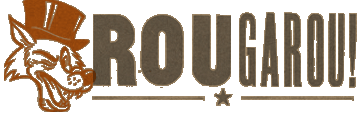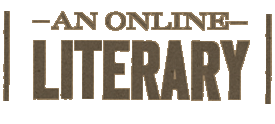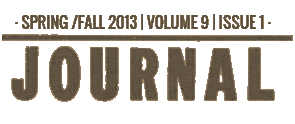· SPRING /FALL 2013 | VOLUME 9 | ISSUE 1 ·
Rougarou, an online literary journal.
It’s In Our Jeans
Suellen Wedmore
The structure of DNA of all species is two helical chains coiled around the same axis.
![]() Cockatiel on my shoulder, I wasn’t surprised
Cockatiel on my shoulder, I wasn’t surprised
![]() to learn my grandmother had raised canaries,
to learn my grandmother had raised canaries,
![]() dozens of wings aflutter, her house filled with liquid song.
dozens of wings aflutter, her house filled with liquid song.
![]() Where was it located on my double-helixed DNA, I wondered,
Where was it located on my double-helixed DNA, I wondered,
![]() the gene that inclined an ear to birdsong?
the gene that inclined an ear to birdsong?
DNA contains instructions for the development of all living organisms.
![]() “It was given to you by someone who loved you, ”
“It was given to you by someone who loved you, ”
![]() the dermatologist said, examining a birthmark
the dermatologist said, examining a birthmark
![]() the shape of Nevada on my lower back. I thought of Grandpa,
the shape of Nevada on my lower back. I thought of Grandpa,
![]() his right cheek hidden beneath what he called a muttermal
his right cheek hidden beneath what he called a muttermal
![]() the shape of Arizona. Consider my grandson:
the shape of Arizona. Consider my grandson:
![]() tiny Rhode Island darkening his left thigh.
tiny Rhode Island darkening his left thigh.
Within cells, DNA is organized into long structures called chromosomes.
![]() Does the gene that makes me yearn pine-scented air
Does the gene that makes me yearn pine-scented air
![]() have a number? The one that calls me to the woods,
have a number? The one that calls me to the woods,
![]() that celebrates the sun streaming into a clearing?
that celebrates the sun streaming into a clearing?
It turns out the pufferfish genome is remarkably similar to a human’s.
![]() How to explain it — the lure of the sea? On Cape Hedge Beach
How to explain it — the lure of the sea? On Cape Hedge Beach
![]() I lie on a blanket at one with the ancient universe, when a plucky
I lie on a blanket at one with the ancient universe, when a plucky
![]() great-great-great-ancestor walked out of the ocean onto dry land.
great-great-great-ancestor walked out of the ocean onto dry land.
Scientists sequencing the genome of chimps found it 96% identical to a human gene.
![]() Grooming? We couldn’t get enough of it: a mother and daughter
Grooming? We couldn’t get enough of it: a mother and daughter
![]() brushing, combing, braiding, pigtailing, styling, bobby-pinning
brushing, combing, braiding, pigtailing, styling, bobby-pinning
![]() each other’s hair, afternoons as we watched television.
each other’s hair, afternoons as we watched television.
Genes significantly influence animal behavior: the male wild turkey, for instance,
struts and spreads his tail feathers every spring.
![]() We went shopping for a silk nightgown, lipstick and nail enamel,
We went shopping for a silk nightgown, lipstick and nail enamel,
![]() a new perfume. Great jeans, I told my friend as she circled
a new perfume. Great jeans, I told my friend as she circled
![]() the changing room, the silver-studded seams accenting her long legs.
the changing room, the silver-studded seams accenting her long legs.
![]() Taut muscle, athletic stride. We take it in stride. N’est pas?
Taut muscle, athletic stride. We take it in stride. N’est pas?
![]() The mandate. Continuation of our species.
The mandate. Continuation of our species.






